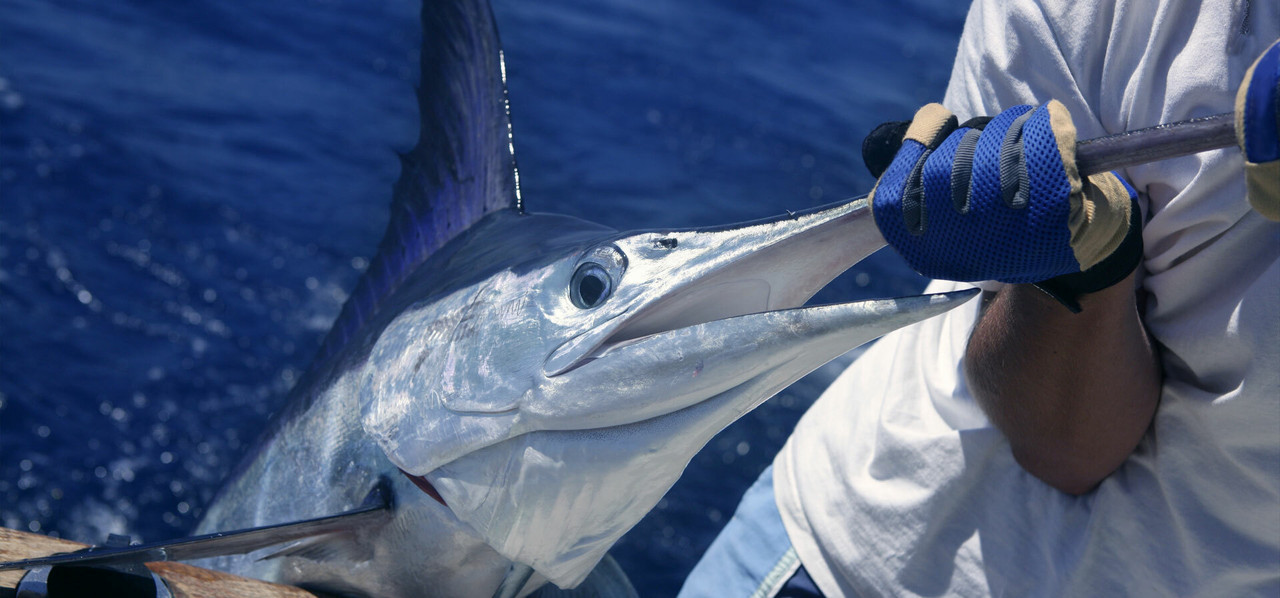A Tackle Shop Guide to Game Fishing Tackle
Rigging up for game fishing can seem intimidating, but the core principles are about creating a strong, reliable system. It's about understanding how each piece of terminal tackle—the leader, swivels, crimps, and hooks—works together to handle the power of a big pelagic fish. This guide will break down the essential components of a standard trolling rig.
A Note From Our Local Experts
"I'll be upfront—I'm not a dedicated game fisherman myself; while I've done a little bit over the years my strong focus has mainly been light tackle and sport fishing. But I've been in this business for over 20 years, and I know what gear is needed to keep our game fishing customers satisfied. Over the years, we've sponsored game fishing clubs, and their members let us know exactly what they not only want but what they need and in brands they trust.
It's based on that direct, real-world feedback that we've built our range of game fishing tackle for sale sporting only reputable brands and components. Whether you're fishing the Canyons offshore or land-based game fishing from the ledges at Jervis Bay, we have the brands many game anglers know and trust."
- Ben Czulowski, Owner, Fishing Tackle Shop (Ocean Storm) | Retailler for 20+ Years
Anatomy of a Standard Trolling Rig
A basic, effective trolling rig is built in a specific order, with each component performing a critical job. Here’s a breakdown from top to bottom:
✔
The Wind-On Leader: This is a heavy, pre-made leader that attaches to your main line via a loop-to-loop connection. Its advantage is that it's smooth enough to be wound directly onto the reel, allowing an angler or deckhand to safely control the fish at the side of the boat without having to handle the leader by hand.
✔
The Ball Bearing Swivel: This is a non-negotiable component. A spinning lure or bait can put immense twist in your line. Only a high-quality ball bearing swivel is designed to spin effortlessly under the extreme load of trolling, ensuring your main line remains straight and strong.
✔
The Leader: This is the main length of heavy monofilament or fluorocarbon that connects your swivel to your lure. Its thickness provides the abrasion resistance needed to handle a fish's rough bill or sharp teeth during a long fight.
✔
Crimps & Chafe Guards: You don't tie knots in heavy leader material. Instead, you use metal crimps (or sleeves) to form strong, reliable loops. A small plastic or stainless steel chafe guard (thimble) is always placed inside the loop to protect the leader from being worn through by the hook or lure.
✔
The Hook Rig: This is the business end. For skirted lures, it's typically a heavy-duty stainless steel J-hook or a twin-hook shackle rig, positioned to sit perfectly within the lure's skirt.
Pro-Tips for Game Fishing Rigs
- Build a Balanced System: Every component in your trolling rig, from the hook to the swivel to the crimps, must be rated to handle the pressure of your chosen line class. When you're running a heavy drag setting on 37kg tackle, every piece of terminal tackle is under immense strain. Always ensure your hooks, swivels, and leader have a breaking strain that is appropriate for your main line to avoid a gear failure on the fish of a lifetime.
- Use the Right Tools: To work with heavy leader and crimps, you need the right tools. A pair of specialised crimping pliers is essential for creating a secure connection that won't fail under pressure. Standard pliers will crush and weaken the crimp.
- Check for Abrasion: After every hook-up, always run your gloved hands down the entire length of your leader. If you feel any significant scuffs, nicks, or rough patches, it's safest to cut it off and re-rig.
Frequently Asked Questions
Why do I need specific 'game fishing tackle'? Can't I just use my heavy snapper gear?
While heavy snapper gear is tough, it's not designed for the unique stresses of game fishing. Game fishing tackle is a complete system where every component—from the rod's roller tip to the swivel's ball bearings and the hook's welded eye—is specifically engineered to withstand the violent strikes and long, high-drag battles of big pelagic fish.
What's the difference between a wind-on leader and just tying a long leader?
A traditional long leader is joined to the main line with a knot (like a Bimini Twist or FG Knot). A wind-on leader connects via a loop, creating a much smoother, knot-less transition that can be safely wound through your rod guides and onto the reel. This allows the angler to bring the fish much closer to the boat before the deckhand has to grab the leader.
How do I choose the right leader size for my line class?
This is a critical point that is different from other styles of fishing. In game fishing, your leader is not chosen to match your main line's breaking strain; it's chosen for its abrasion resistance. The leader's job is to withstand the rough bills of marlin, the sharp teeth of tuna, and the general wear and tear of a long fight. As a general rule, for heavy tackle (24-37kg), anglers typically use leaders in the 200lb to 400lb class for marlin and 100lb to 200lb for tuna.



